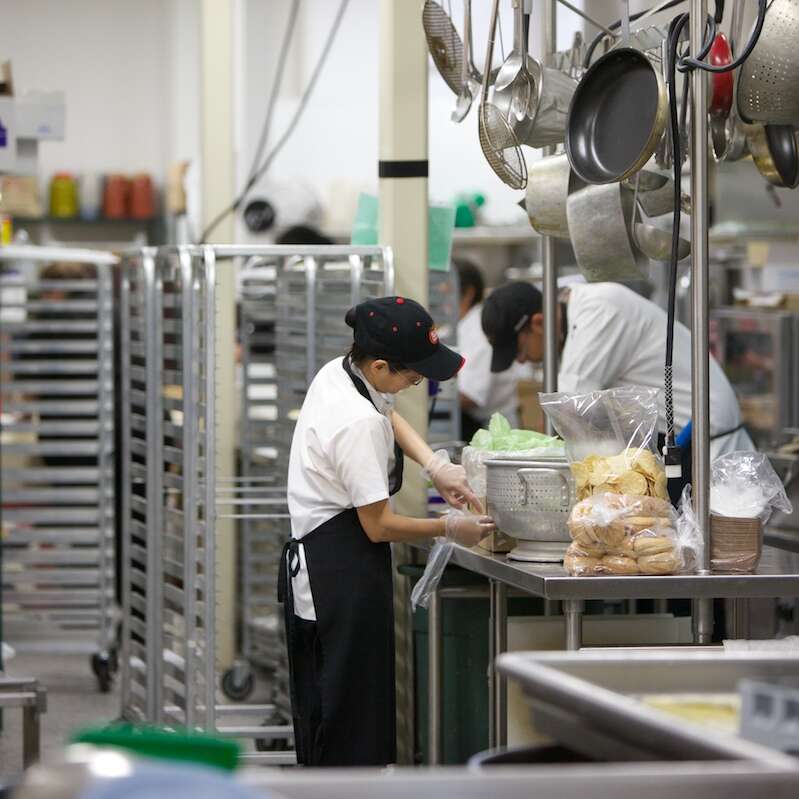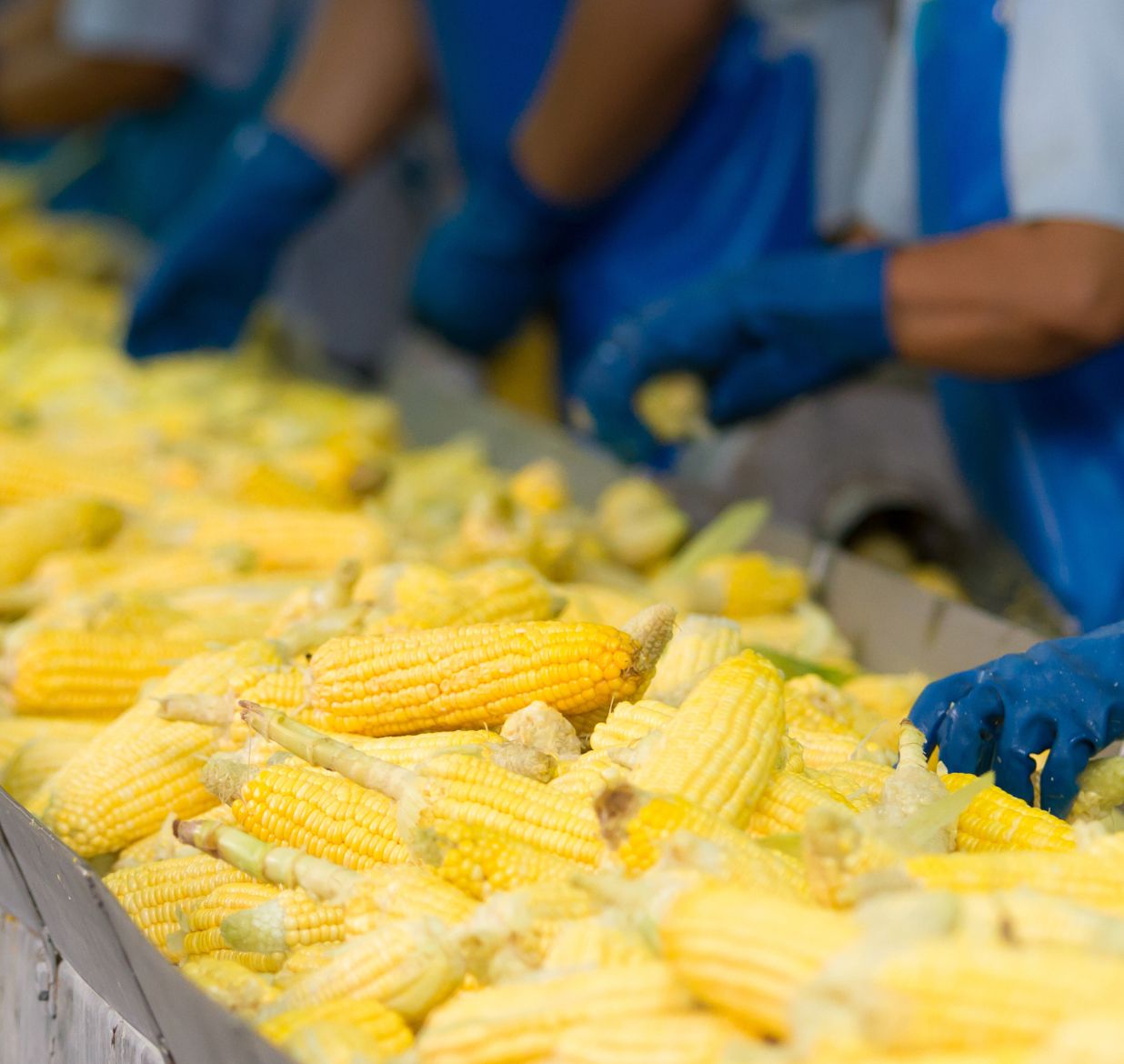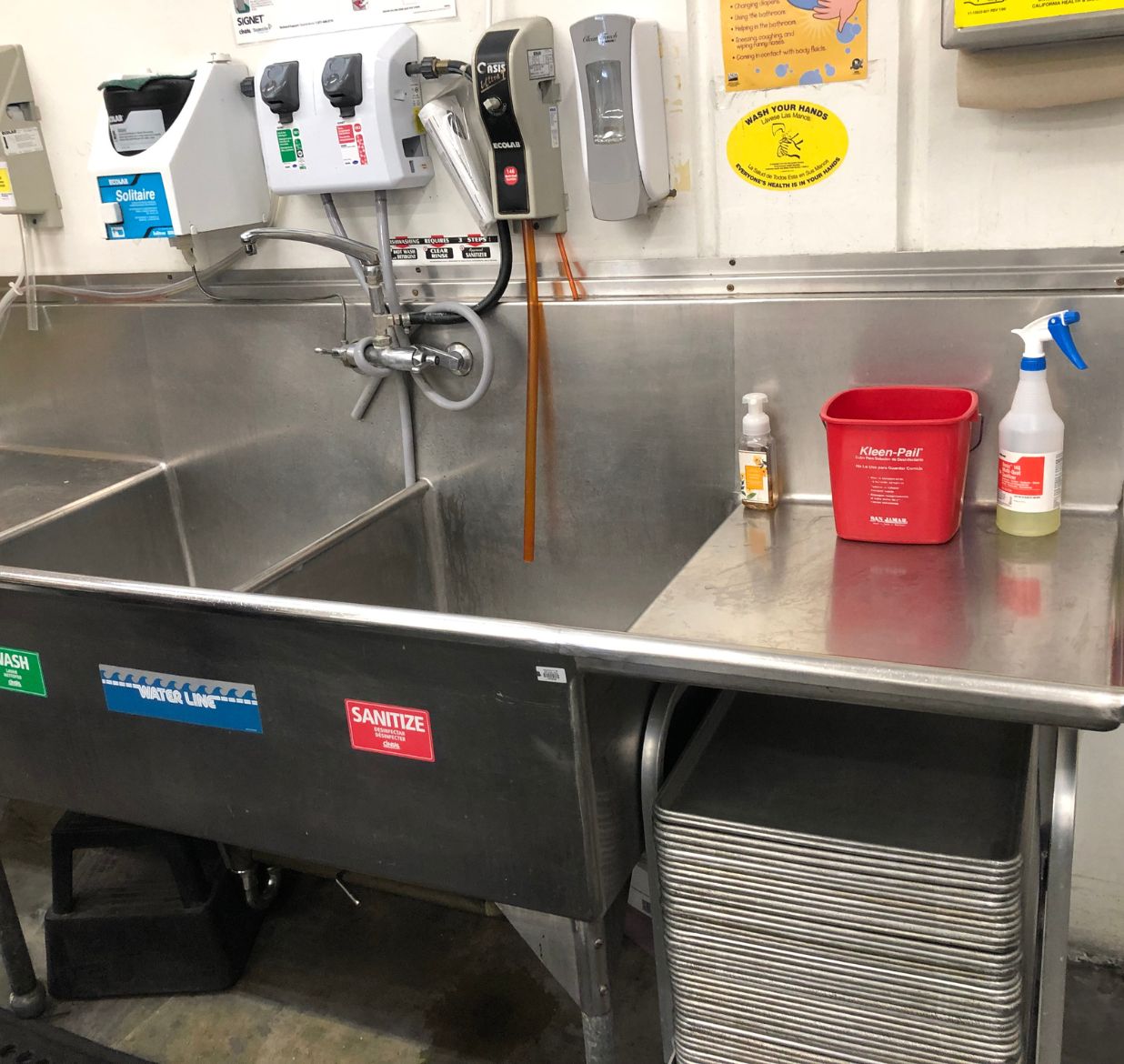
Hazard Analysis Critical Control Points
A Hazard Analysis Critical Control Point (HACCP) is a system that provides a framework for monitoring food from receiving through consumption to reduce the risk of food-borne illness and contamination. The system is designed to monitor, identify, and control possible points of contamination through the flow of food before they occur. HACCP plans are a necessary National School Lunch Program component, and are crucial in a scratch cooking establishment to ensure food is delivered, stored, prepared, cooled, and served as safely as possible. Our resources provide step-by-step guidelines around conducting a hazard analysis, determining critical control points, monitoring procedures, establishing corrective actions, and accurate record keeping.

Hazard Analysis Critical Control Points
A Hazard Analysis Critical Control Point (HACCP) is a system that provides a framework for monitoring food from receiving through consumption to reduce the risk of food-borne illness and contamination. The system is designed to monitor, identify, and control possible points of contamination through the flow of food before they occur. HACCP plans are a necessary National School Lunch Program component, and are crucial in a scratch cooking establishment to ensure food is delivered, stored, prepared, cooled, and served as safely as possible. Our resources provide step-by-step guidelines around conducting a hazard analysis, determining critical control points, monitoring procedures, establishing corrective actions, and accurate record keeping.
Critical Control Points
Outlining an action plan for critical control points ensures safety within a production kitchen. A critical control point is a step in a process at which control can be applied and is essential to lowering or preventing a food safety hazard from occurring. By controlling and managing the conditions of a facility, maintaining compliance, and putting corrective actions into place, the highest degree of safety can be achieved. See this Temperature Danger Zone graphic and visit our Fresh Animals Proteins page to use as a guide when creating your HACCP plan.
HACCP Standard Operating Procedures
SOPs provide a structured framework that ensures consistency, reliability, and efficiency in every component of your operations. Whether you’re a small single-school program or a larger district, understanding and implementing SOPs can streamline your processes, enhance performance, and elevate your overall efficiency. When creating and implementing an effective HACCP plan, SOPs are critical to ensure all standardized and proper food safety practices are in place. See the following SOPs that are relevant to a successful HACCP plan:


HACCP Standard Operating Procedures
SOPs provide a structured framework that ensures consistency, reliability, and efficiency in every component of your operations. Whether you’re a small single-school program or a larger district, understanding and implementing SOPs can streamline your processes, enhance performance, and elevate your overall efficiency. When creating and implementing an effective HACCP plan, SOPs are critical to ensure all standardized and proper food safety practices are in place. See the following SOPs that are relevant to a successful HACCP plan:
Visit our general SOP Page for additional resources
Recall and Traceability Plans
Traceability follows a food product or material through all stages of production, processing, and distribution. The product is usually identified by a label, lot number, or production number. Traceability is the process put in place to allow food production facilities and government agencies to trace and identify any products that pose a food safety risk. Knowledge of this process enables a food service department to efficiently identify at-risk products. To enhance this knowledge, a mock recall can be conducted which is even more rigorous. In addition to tracing the product, a mock recall tests your Food Service Staff’s ability to remove the unsafe food before being served. See the following resources below for mock recall procedures as well as procedures for a real recall.


Recall and Traceability Plans
Traceability follows a food product or material through all stages of production, processing, and distribution. The product is usually identified by a label, lot number, or production number. Traceability is the process put in place to allow food production facilities and government agencies to trace and identify any products that pose a food safety risk. Knowledge of this process enables a food service department to efficiently identify at-risk products. To enhance this knowledge, a mock recall can be conducted which is even more rigorous. In addition to tracing the product, a mock recall tests your Food Service Staff’s ability to remove the unsafe food before being served. See the following resources below for mock recall procedures as well as procedures for a real recall.

Sanitation and Hygiene
A HACCP plan intends to ensure safety at specific Critical Control Points (CCPs) within specific processes. Proper sanitation and hygiene practices are the cornerstones of a HACCP plan and can serve as a preventive approach to product contamination or adulteration. Both sanitation of kitchens and personal hygiene of staff are essential to a HACCP plan, see these resources for Equipment Cleaning and Sanitizing Procedures and Hand Washing Procedures for guidance in implementing these food safety practices.

Sanitation and Hygiene
A HACCP plan intends to ensure safety at specific Critical Control Points (CCPs) within specific processes. Proper sanitation and hygiene practices are the cornerstones of a HACCP plan and can serve as a preventive approach to product contamination or adulteration. Both sanitation of kitchens and personal hygiene of staff are essential to a HACCP plan, see these resources for Equipment Cleaning and Sanitizing Procedures and Hand Washing Procedures for guidance in implementing these food safety practices.
Kitchen, Warehouse & Equipment
The warehouse facility of a school food department plays a critical role in the flow of food. Food needs to be received, stored, and transported from a food warehouse safely and accurately to ensure food safety. In addition, these facilities can house large equipment, vehicles, and forklifts that are actively moving about these facilities. Safety procedures need to be in place to prevent accidents and potential hazards. See Kitchen, Warehouse, and Equipment Policy & Procedures for help creating warehouse safety procedures within your HACCP Plan.
Allergies
Allergens are considered a food safety hazard and procedures for handling allergens within your kitchens should be included in a HACCP plan. The way a district handles food allergies will vary and involves a multitude of departments and stakeholders within a school district and community. When creating your HACCP Plan, it is highly recommended to work with your district stakeholders and parents to ensure all policies are followed and appropriate procedures are in place. See this Allergy Resource Guide and Allergen Control SOP for more information. For more detailed resources, visit USDA’s Food Allergies Resource Page.
Documentation & Record Keeping
Keeping clear and accurate records as part of a HACCP plan can be key to success and safety. Standard Operating Procedures that help streamline processes for staff will aid in accountability throughout the process. Records should be stored and filed in an appropriate place with easy access for a determined amount of time. These documents can be crucial to the accountability of safety and sanitation throughout the flow of food in an operation. See this Record Keeping Policy & Procedures Guide when planning record-keeping practices within your HACCP Plan.
Additional Resources
- ICN Food Safety Resources (also includes Spanish translated resources)
- USDA Guidelines for SFA’s
- USDA Food Safety Resources
- USDA HACCP Guidance
- USDA Guidebook for the Preparation of HACCP Plans
- TLB SOP’s Page
Recommended Next Topic: Central Kitchens
Central kitchens are becoming a more popular option for school districts looking to streamline and expand their school food operations. While centralized production is not one-size-fits-all, this model offers a number of opportunities for districts with the capacity and incentive to plan and construct a new facility.
Recommended Next Topic: Central Kitchens
Central kitchens are becoming a more popular option for school districts looking to streamline and expand their school food operations. While centralized production is not one-size-fits-all, this model offers a number of opportunities for districts with the capacity and incentive to plan and construct a new facility.



